Jean Charles Cazin (1840-1901)
Coming from a good Boulogne bourgeoisie (his father, a doctor, was at the origin of the creation of the hospitals of Berck), Jean-Charles studied at the School of Decorative Arts and followed the teaching of Lecoq de Boisbaudran.
In 1863, he took part in the Salon des Refusés with Manet. In 1866, he was a professor at the Special School of Architecture and became director of the School of Fine Arts in Tours and curator of the City Museum.
In 1871, he stayed in England where he worked in ceramics with his wife, Marie.
Back in France, he exhibited Le Chantier (1876), a painting in which he practiced the ancient technique of wax painting.
Then begins the series of compositions of biblical and mythological inspiration for which the members of his family pose and whose decor is inspired by the Coast: the dunes in Agar and Ismaël (1880), the ramparts of Montreuil-sur-mer in Judith , the departure (1883) or even the cliffs of Equihen in Ulysses after the shipwreck (1890-1892).
After 1883, in the house and in the studio that he had built in Équihen, he abandoned the themes of history painting and gave landscapes of the Boulonnais coasts, nocturnes, in which he gave free rein to his sensitivity: veiled, stormy skies, muffled tones of snowy landscapes.
In 1889, he was a gold medalist at the Universal Exhibition and in 1900, he received the grand prize for painting. Fallen into relative oblivion since his death in 1901, CAZIN deserves that we linger over his work which ranks him among one of the greatest landscape painters of the Pas-de-Calais.
PS: In a superb gilded and carved wooden frame




















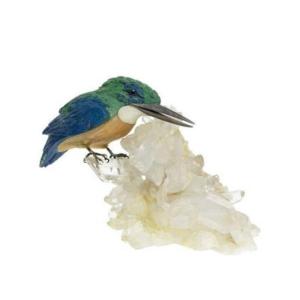




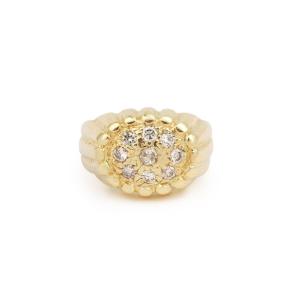

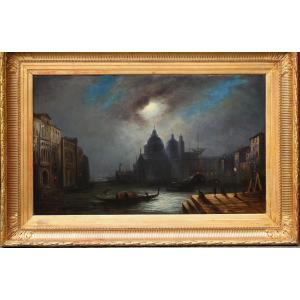
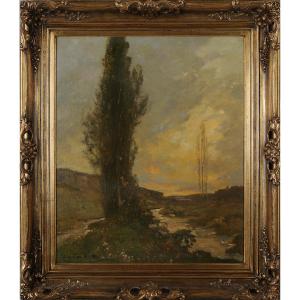

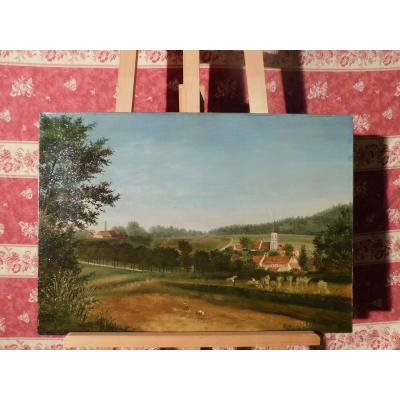



 Le Magazine de PROANTIC
Le Magazine de PROANTIC TRÉSORS Magazine
TRÉSORS Magazine Rivista Artiquariato
Rivista Artiquariato